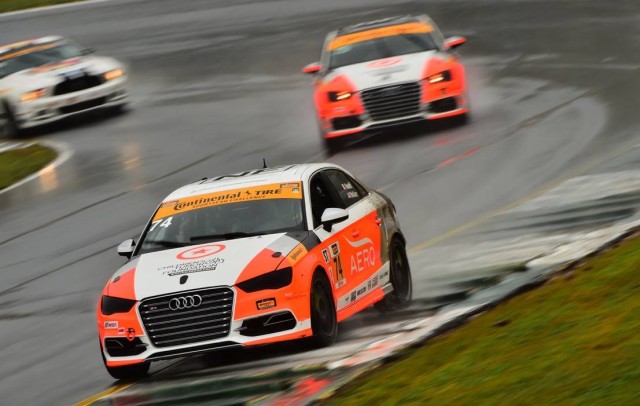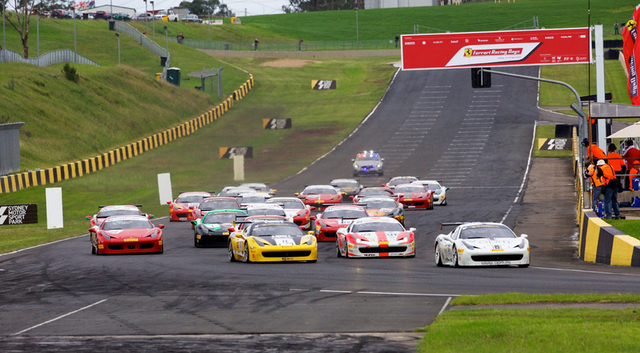Nico Rondet is the foremost instructor at the Simraceway Racing School in Sonoma, California, and here, he demonstrates exactly how one ought to go about finding the proper line on a sodden circuit. With an already-slick track like Sonoma Raceway, a mid-engined Ferrari 458 Challenge and little runoff area, there’s a good reason to be neat, tidy and meticulous with how one goes searching for grip on such a surface.
This massively powerful, raucous 4.5-liter V8 engine requires a little tenderness when applying the throttle on the damp surface, since 570 horsepower means the rear wheels can spin up furiously if no discretion is used. Similarly, though the car features reliable ABS, it gathers speed so rapidly that a little consideration is needed when finding the braking point.
Rondet demonstrates with startling clarity that, if one expects to ensure decent momentum on a slick surface, a careful placement of the car and utmost precision with the inputs are absolutely necessary.
Rondet remarks, “You have to drive away from the dry line. Sonoma is used a lot and has a wider-than-normal dry line. Also, the grip level is low, even in the dry.” Noticeably, his inside wheels are just grazing the area a car traveling on the dry line would occupy. Mostly, his car stays centrally-located on the circuit, while following a general out-in-out line with a highly compromised attack into each corner. The inside sections where rubber tire deposits, also known as marbles, accumulate, must be avoided for they tend to act like ice when they’re mixed with water.

Driver of the Compass 360R Audi S3, Rondet keeps his wet weather skills sharp in the Continental Tire Sportscar Challenge.
Because the Ferrari produces its 570 peak horsepower figure at 9,000 rpm, the motor is very tractable and manageable. Administering the power takes some care, but isn’t impossible. “Gears stay the same except a couple of corners,” he notes, indicating some of the faster corners which cannot, even at higher speeds, accept the amount of power put down and mandate a short shift.
In fact, some areas are so full of standing water that an evasive line around the outer perimeter of the corner has to be taken while tip-toeing around; just barely touching the throttle to keep momentum up. However, Rondet’s quick drifts through turns 2 and 3 demonstrate that a little bit of sliding isn’t a deal-breaker.
His braking is changed slightly as well. Throughout the lap, pedal pressure is relatively low, and only in turn 11 does Rondet brake very hard at all. His line entering 11 is on the inside of the track and instead of hugging the apex, he drives a long, diamond line around it, changing direction later, but more abruptly. This keeps his tires off of the dry line entirely when turning, and allows more cornering speed, even through a longer route is taken.
“Sure, as it dries out, the line evolves. This is the safest wet line and also the fastest,” Rondet mentions. Finding the right line in the rain requires a little improvisation, some courage and a delicate touch. For more information on changing the setup of your car to adjust to wet weather, you can find more information in our related article here. Happy rooster tails!























